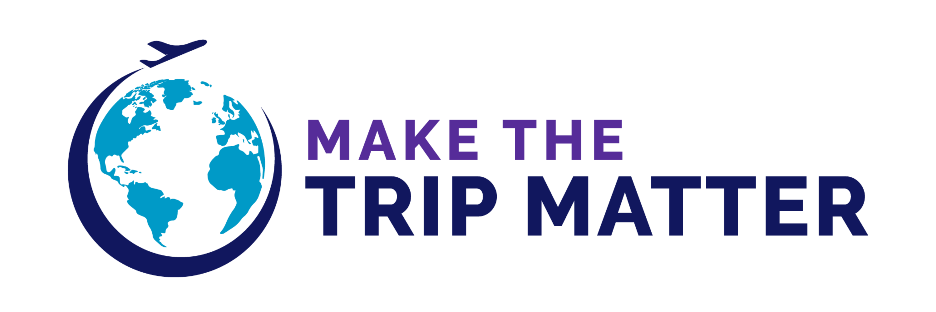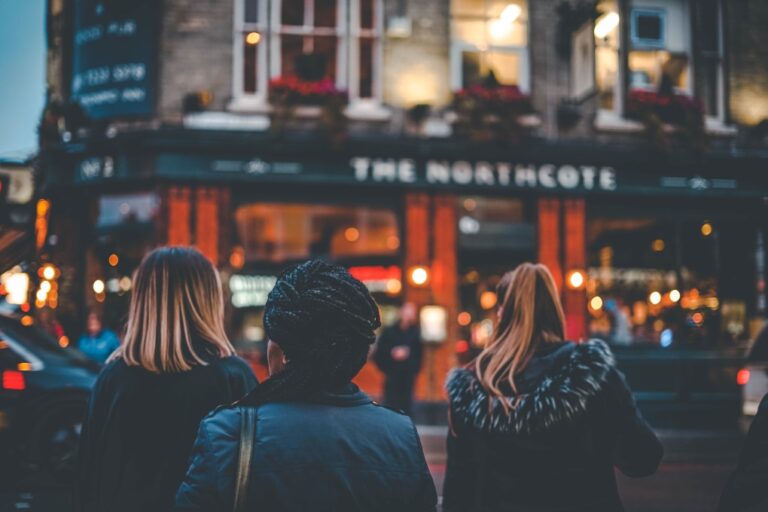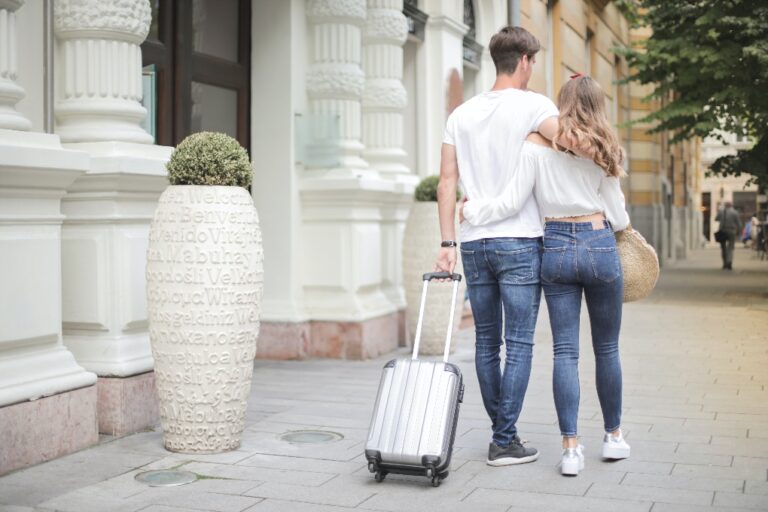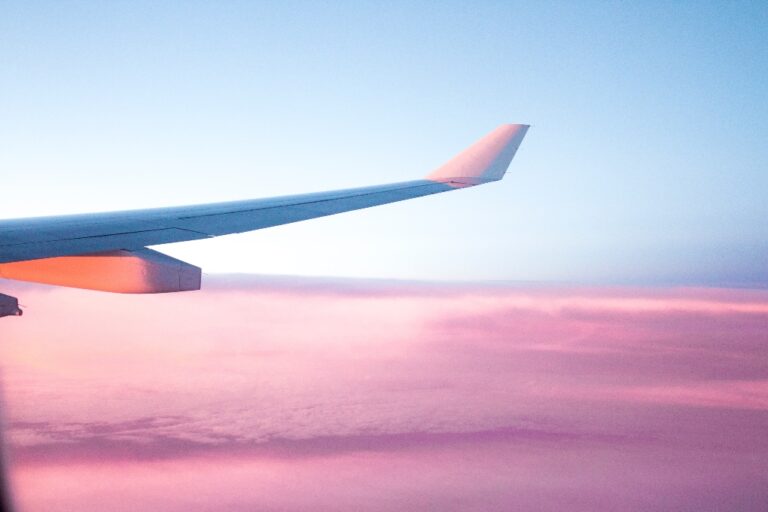First Time Flyer Guide and Checklist: Top 50+ Tips
From the first time I can remember flying as a kid, my parents would have me “lead” them around the airport and ask me to figure out what we had to do next. Even still, I was a nervous wreck on my first solo trip as an 18-year-old! But the trip went smoothly, and I quickly realized how EASY it can be to fly. This post gives advice for first-time flyers and a detailed airport guide and flying checklist to alleviate any stress before flying for your first time.
What Is It Like Flying for the First Time?
Flying for the first time is not nearly as scary as it feels like it will be!
Did you know that air transportation is actually the SAFEST form of travel?
My best piece of advice for first-time flyers is to be prepared for their flight (just follow this guide!) and know what to expect because the most stressful part of flying for the first time is getting through the airport.
Once you are on the plane it’s just a matter of relaxing until you land!
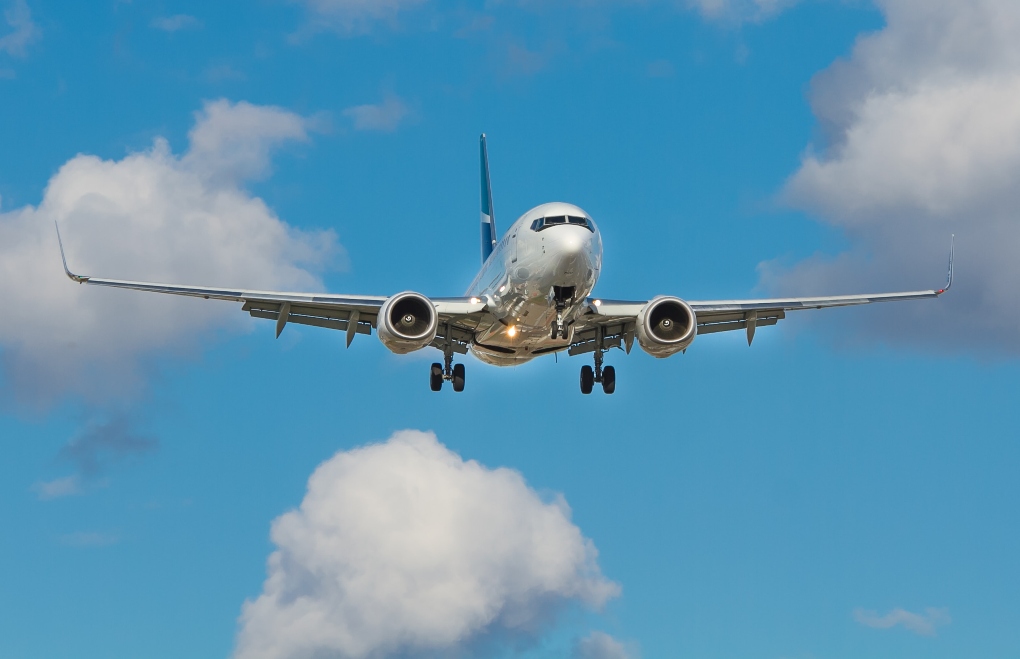
The actual experience of being on an airplane, I think, can be quite fun. Take off and landing will feel a bit like being on an elevator or a very calm rollercoaster. The airplane will begin to “taxi”, which is where they drive around the airfield to get into the proper position on the runway. Then, the plane will speed up and lift off.
When you get close to landing, there will be an announcement letting you know to prepare for landing. Landing is much quieter than take-off, the only thing you might feel is a small jolt when you touch down.
There may be some turbulence during your flight, this is normal! Turbulence happens when the airplane goes through a patch of irregular air. The captain may warn you first if there is a big patch of turbulence, but for the most part, it will just feel like light bumps and is nothing to worry about.
How Do You Calm a First-Time Flyer?
It is normal for people to feel anxious about their first flight. If you or someone you are traveling with is on their first airplane, the best way to calm them is to prepare them. Become familiar with the process of going through the airport and what to expect during the actual flight.
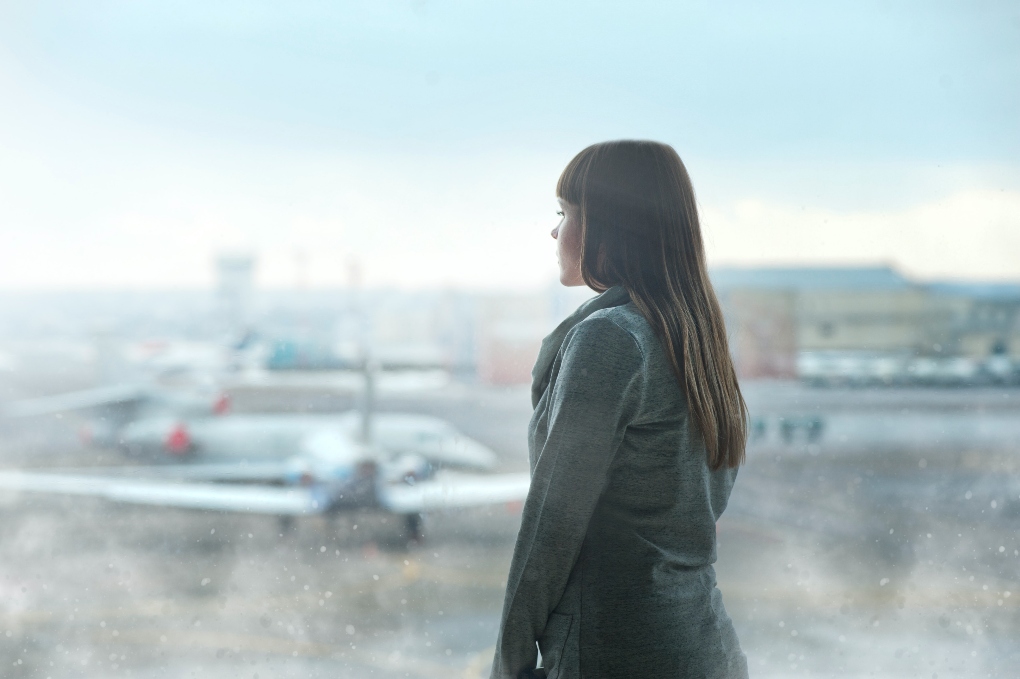
Something that helps me is reminding myself that air travel is the safest form of travel, it’s FAR safer than driving even, which we do all the time.
If you want to know the statistics: There is 1 fatal accident per 16 MILLION flights. With fatal car crashes, the odds are 1 in 144. Insanely higher! So just remember that you are much much safer on an airplane.
Tips for First Time Flyers With Anxiety
Anxiety is normal for many people who travel by air. Even I can get a bit anxious on a plane, and I have been on more planes than I could even begin to count in my life. Here are a few helpful tips for a first-time flyer’s guide to experiencing anxiety:
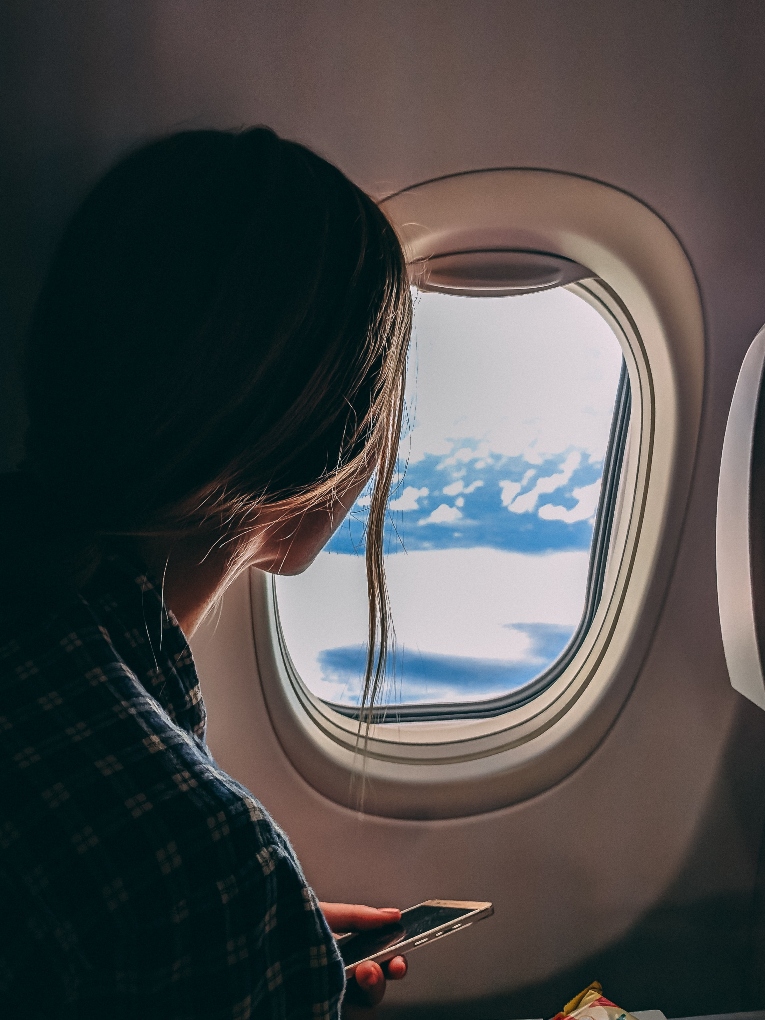
- Get to your gate early. A big part of people’s anxiety starts with worrying about missing their flight.
- Being at your gate early lets you settle in. Take a walk, do some light stretches, or start listening to a calming book or music.
- For some people, having a drink or two (just don’t go crazy!) beforehand might help to calm the nerves – it’s why airport bars are popular!
- On the plane, if turbulence or something is making you anxious, practice calming breaths and clearing your mind of the anxious thoughts.
- Some flyers find it comforting to walk the plane and do some light stretches in the back.
- When we hit especially bad turbulence, I focus on breathing in and out slowly and repeating a phrase that calms me down. Often, I have to repeat, “It’s just a bit of turbulence, we’ll be through it soon.” Even though I logically know turbulence is completely normal!
- If you are prescribed anxiety medications, make sure to take your meds regularly or ask your doctor about how to take them to help specifically with flight anxiety.
ONE OF THE BEST PRODUCTS FOR FIRST-TIME FLYERS
Memory Foam Neck Pillow + Eye Mask + Ear Plugs
Can I Use My Phone on a Plane?

Yes, you can use your phone on a plane if it’s in airplane mode. Some airlines and flights may ask that you turn your phone off completely during take-off and landing, especially if there is a bout of bad weather or the airport is busy.
For the most part, you can use your phone throughout the flight so long as airplane mode is turned on. This means you will not be able to use data but will have all other phone functions. Most airlines nowadays offer WiFi onboard the plane, but almost always for a fee.
What Do You Do at an Airport for the First Time?
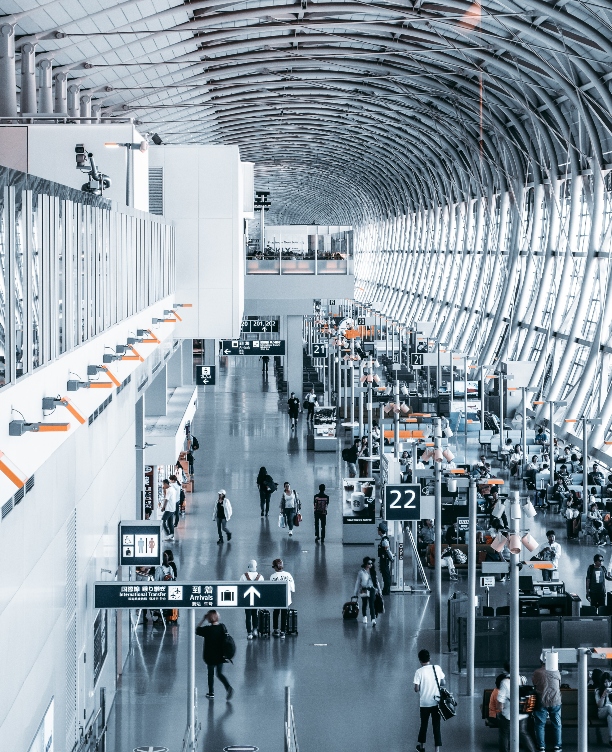
This first-time flyer guide will outline what to expect for flying and exactly what to do at the airport step by step. Some airports are big and confusing, others are small and straightforward. Either way, once you know what to do at the airport it will be easy to navigate any airport, as they all follow the same structure.
Enjoy being at the airport! Maybe I’m just an oddball travel junkie, but I think airports are so much fun. There is great people-watching and seeing the destinations on the boards makes me think about all the possibilities of places to visit and how big the world is.
BUYING PLANE TICKETS FOR YOUR FIRST FLIGHT
1. How to Pick Your Destination
If you don’t already have a destination in mind but know you want to take a trip, there are a few things to keep in mind:

- Weather – What time of year are you trying to travel? Look up the weather of your possible destinations during this time of year.
- Length of flight – For your first flight it might be better to pick somewhere closer that has a shorter flight.
- Price of flight – If you aren’t familiar with flying, you won’t have much of an idea of the price range of flights. Use a search tool such as Skyscanner to check for destinations and see what options for pricing you will have.
- Accommodation availability – There is nothing worse than buying a flight somewhere and THEN realizing there aren’t many options for places to stay or the options are out of your budget.*
- Be spontaneous – My favorite thing to do is pull up Skyscanner’s “Search Everywhere” tool and see what cities or locations have the best deals and cheapest flights. This is the perfect tool for someone who has a time frame in mind for a trip, but no idea where to go.
❗*Still looking for accommodation?
I use HostelWorld to find the best global hostels and Booking.com to find the best global hotel deals.
International vs Domestic Flights:
As a first-time flyer guide, it will be easier to pick somewhere domestic. However, first-time flyers shouldn’t be afraid of going international! There are so many amazing places to see, don’t limit yourself to staying local. For your first time going international, try to pick somewhere with a familiar culture and/or a language you speak.

💡 Browse through some of my destination guides for inspiration, and take a look through my travel resources page for the best tools that I use for both domestic and international trips.
2. How to Buy Plane Tickets
Once you know where you want to go, the next step is keeping an eye on flight prices. If you have an airline you have been recommended or have researched and would prefer to use, it’s best to just keep an eye on their website directly.
Otherwise, do some initial searches on flight prices to see if they are in your budget. If they are a little high, or you are far enough out you have the flexibility to see if the price will drop, then set up a ‘flight alert’ on Skyscanner to get notified when the ticket price goes down.
3. When to Buy Plane Tickets
Generally, you want to book plane tickets well in advance of your trip. Occasionally you can find great fare drops right before the flight, but that is a pretty risky gamble as they usually actually spike in price the last few. days before a flight.
For domestic flights, roughly 3 weeks to 3 months is a good time to buy tickets.
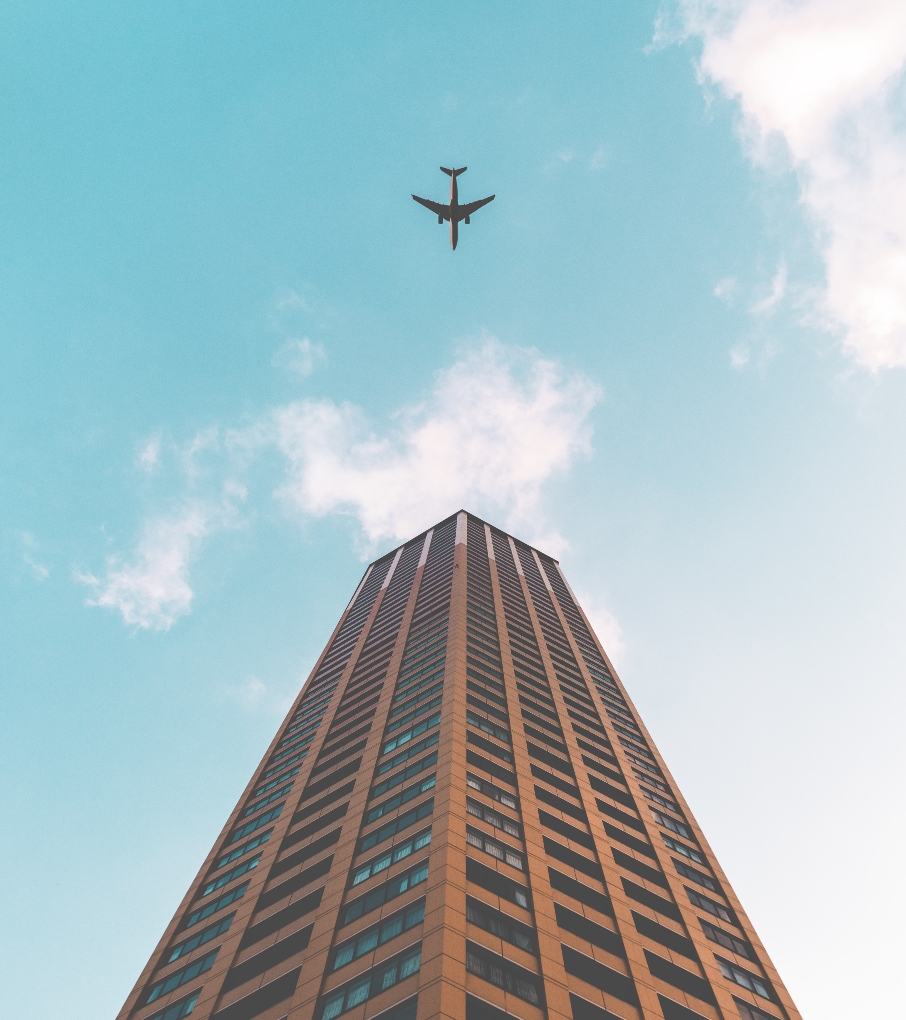
For international flights, give yourself even more time. Book at least one month out, but the best times to book range from three to five months out.
Keep in mind the time of year you will be flying in too. If you are flying during popular travel times such as the holidays or the summer, you probably want to look at flights even further out.
Another tip: I book most of my flights on a Tuesday or Wednesday. Flight prices tend to drop by a little bit during the week.
4. Where to Look for Plane Tickets
There are quite a few flight search engines that claim to find the best prices. Buying affordable plane tickets is the art of finding the right timing, staying patient, and researching across platforms.
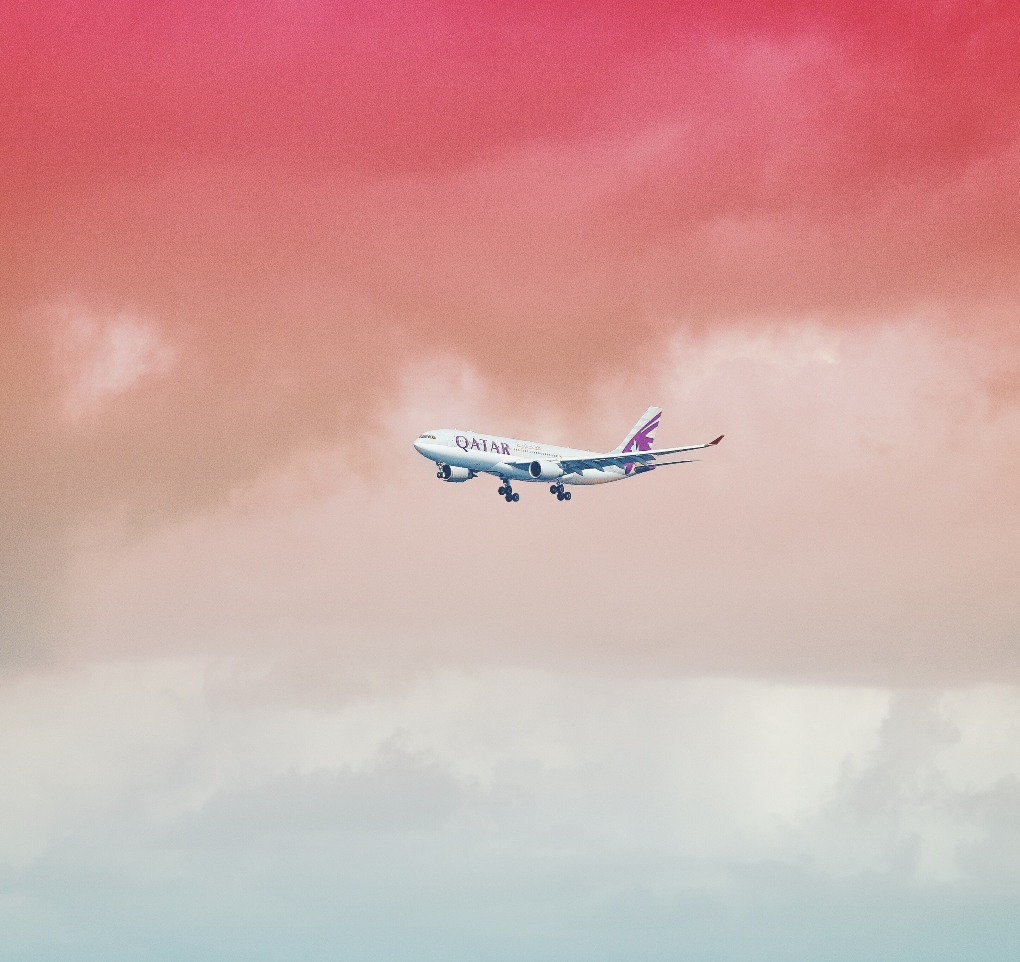
The best way to buy plane tickets is to buy directly from the airline if they have a decent price for the flight. Otherwise, these are the flight search engines that I use and recommend:
Going (Formerly Scott’s Cheap Flights):
This is a FREE email list that sends you flight deals and fare drops from your home airport. I highly recommend everyone to sign up for this free service, you never know when they will send a deal for somewhere you are looking to go.
This list is perfect for the spontaneous traveler who doesn’t have a destination in mind. I have found many great deals through Going, and my friend once found a roundtrip ticket to Australia from Los Angeles for under $500!
➡️ CLICK HERE TO SIGN UP FOR GOING
Skyscanner:
This is my favorite flight comparison tool for finding the best deals on flights. Skyscanner searches across airlines to find the cheapest flights. Plus, I love that you can search “everywhere” and “anytime” to find the cheapest flights. If you are flexible on the days you can fly, while searching you can see what days have the lowest prices.
➡️ CLICK HERE TO SIGN UP FOR SKYSCANNER
❗Is Skyscanner legit?
Read my review of Skyscanner HERE
Google Flights:
This is another favorite tool of mine to check for cheap flights across airlines. Google Flights is easy to use and reliably provides great deals.
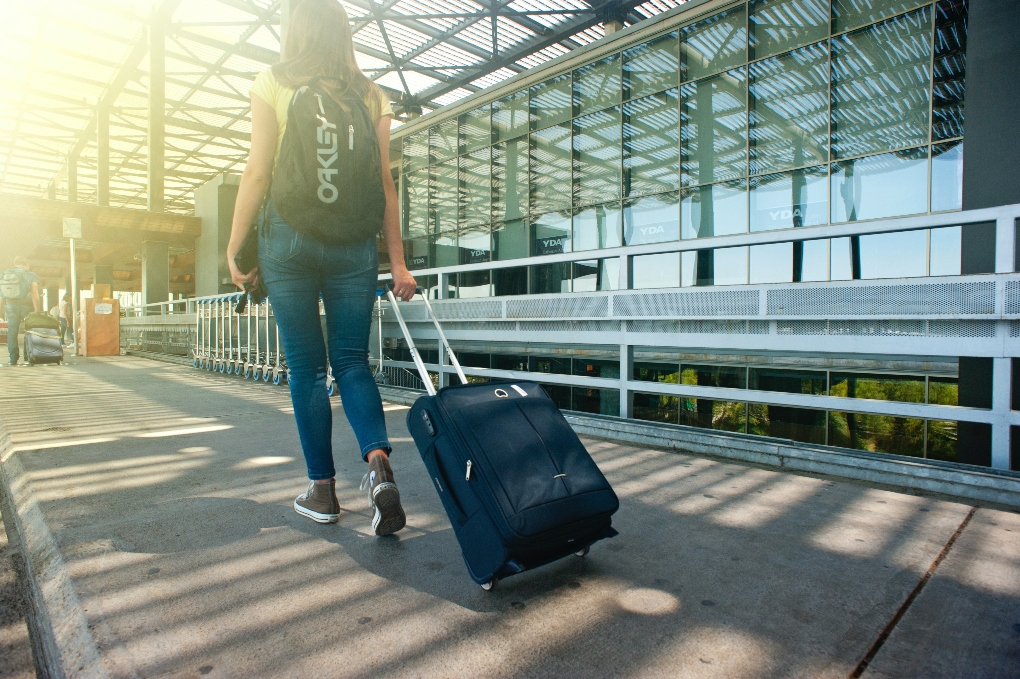
5. Understanding Flight Add Ons
Of course, buying plane tickets is never as straightforward as it should be. Airlines will upcharge for just about everything nowadays.
While buying your ticket you will have plenty of places where the airline tries to add on features (i.e. extra legroom, meal service, baggage options). You can look through each option and decide what you want to add to your flight, or simply skip through and stay with the base rate.
6. Choosing Your Baggage Needs
Pretty much every airline nowadays will charge you a fee for checking a bag. Most airlines will allow you one carry-on (a small suitcase size and has to fit in the overhead bins) and a personal item (either a purse or as large as a standard backpack).
The budget airlines might not even allow you a carry-on without an extra fee or weight restrictions.
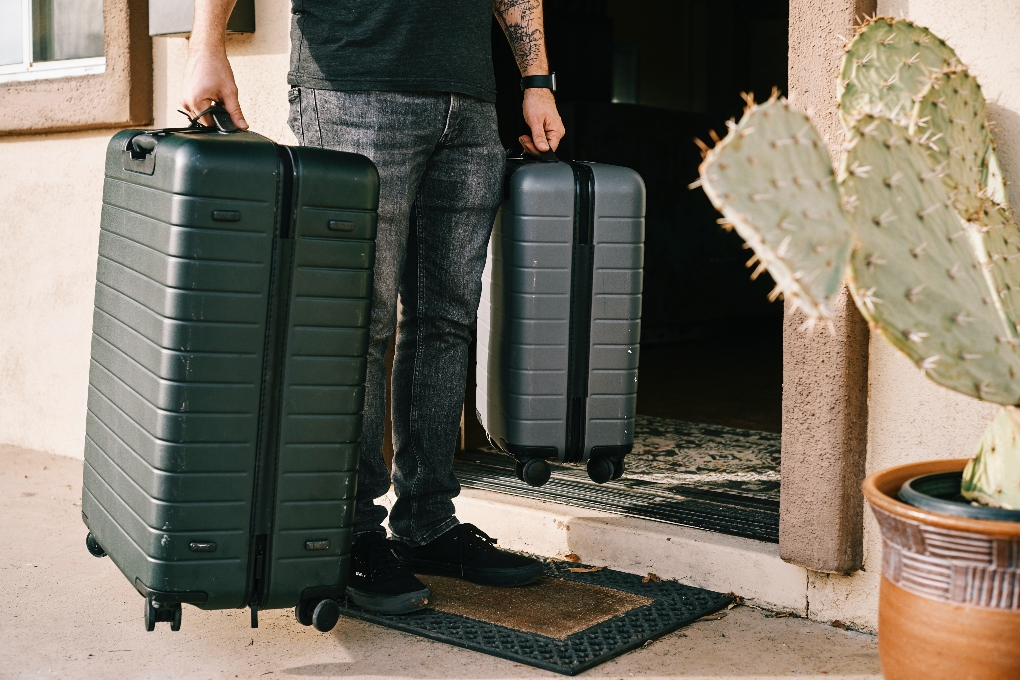
Usually while buying your ticket the airline will give you the option to choose how much baggage you will be bringing. Otherwise, check the airline’s website for their policy on baggage and what they allow to be carried on board. You will also be able to check online for the restrictions on dimension and weight that each airline allows.
🔻One of the BEST travel carry-on backpacks!🔻
Some flights will have a randomized seating selection, meaning it is the first available seating when you get on the plane. Most airlines let their passengers pick their seats ahead of time but may charge you to pick a seat and will certainly charge extra for better seats.
If you are traveling alone or are comfortable having your seat pre-assigned by the airline you might be able to save some money on not choosing a seat.
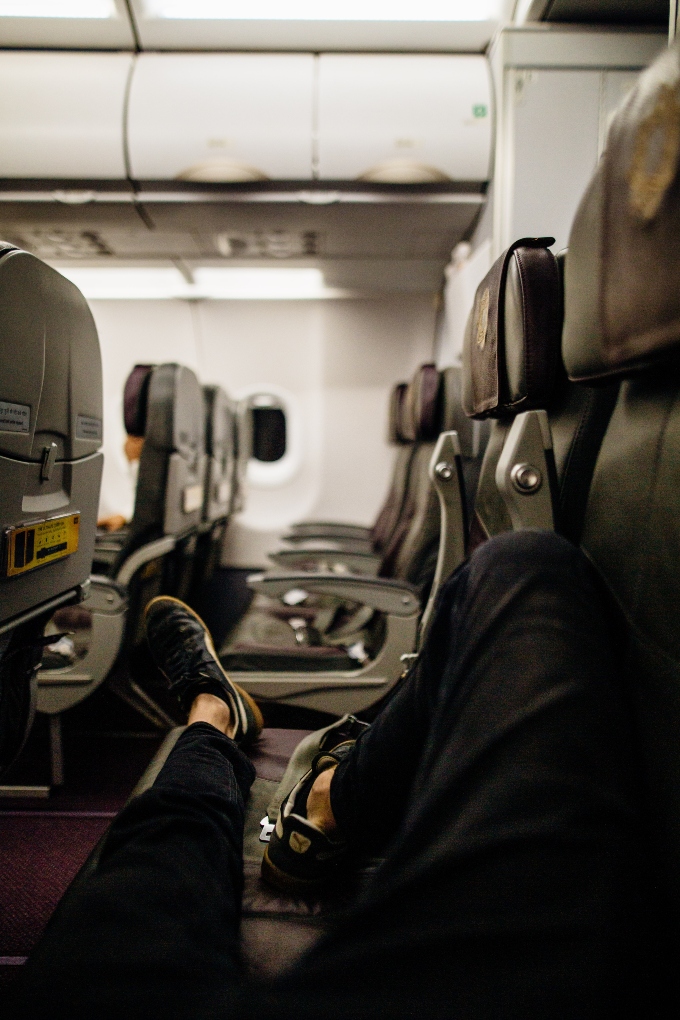
FIRST-TIME FLYER’S GUIDE TO PREPARING FOR YOUR FLIGHT
8. Have the Proper Identification for Flying
To fly within the U.S. you will need a valid form of identification. As of May 7th, 2025 every passenger over the age of 18 will need to have a “Real I.D.” or a passport.
Depending on your destination and vaccination status, you may also need to show proof of a negative COVID-19 test or proof of vaccination.
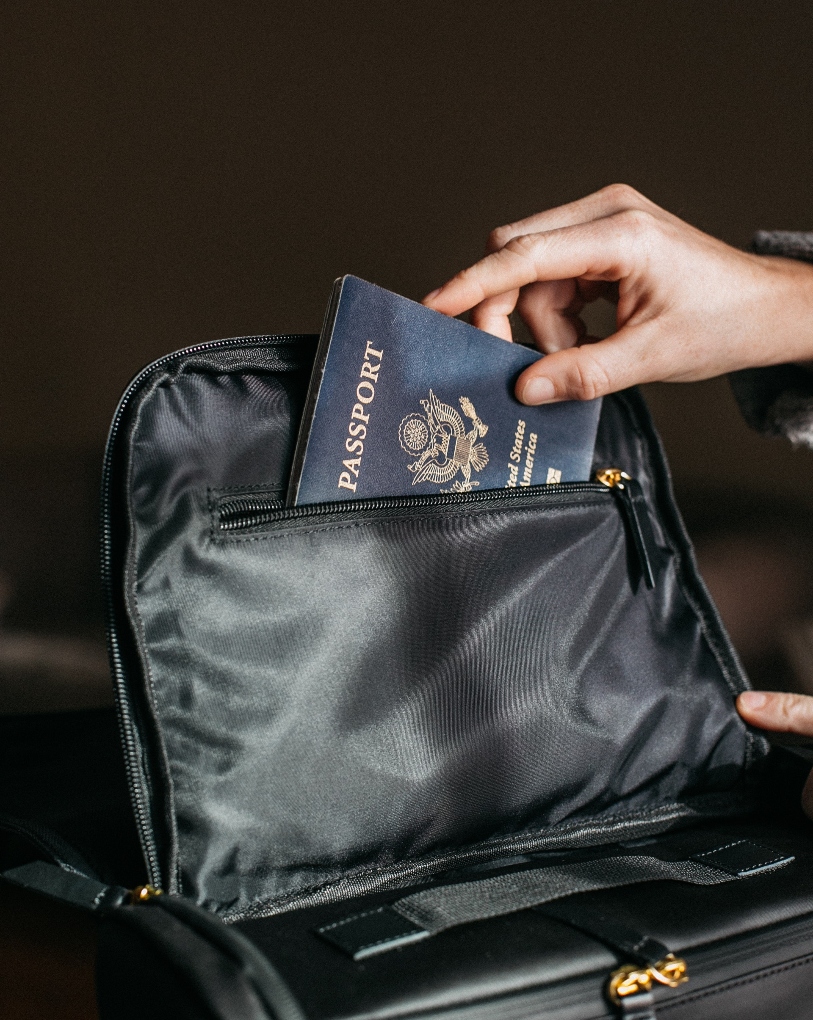
9. Buy Travel Insurance
Any time you travel you should always have travel insurance to cover you in case of an emergency. This is different from your normal health insurance and covers emergency travel situations such as delays, lost baggage, natural disasters, etc.
I use and recommend SafetyWing for medical and travel insurance. It is affordable, reliable, and flexible insurance that is specifically designed for digital nomads who will be traveling long-term, though it mostly covers emergencies which is perfect for short-term travelers and first-time flyers as well.
For an idea of how much insurance will cost you, use the tool below. Or, to purchase insurance directly from SafetyWing, CLICK HERE.
10. Know When Flyers Need to Be at the Airport
Domestic Flyers:
The standard recommendation for domestic flights is to arrive 2 hours before your flight.
This is to give you plenty of time to check in, check your bag, make it through security, and arrive at your gate before boarding starts.
As a first-time flyer’s guide, I encourage you to stick to this recommendation to give you plenty of time to make your way around the airport without worrying about being late.
However, if you are not checking a bag and you are at a smaller airport, you might have more wiggle room and could probably arrive an hour and a half to one hour before your flight, depending on your comfort level.
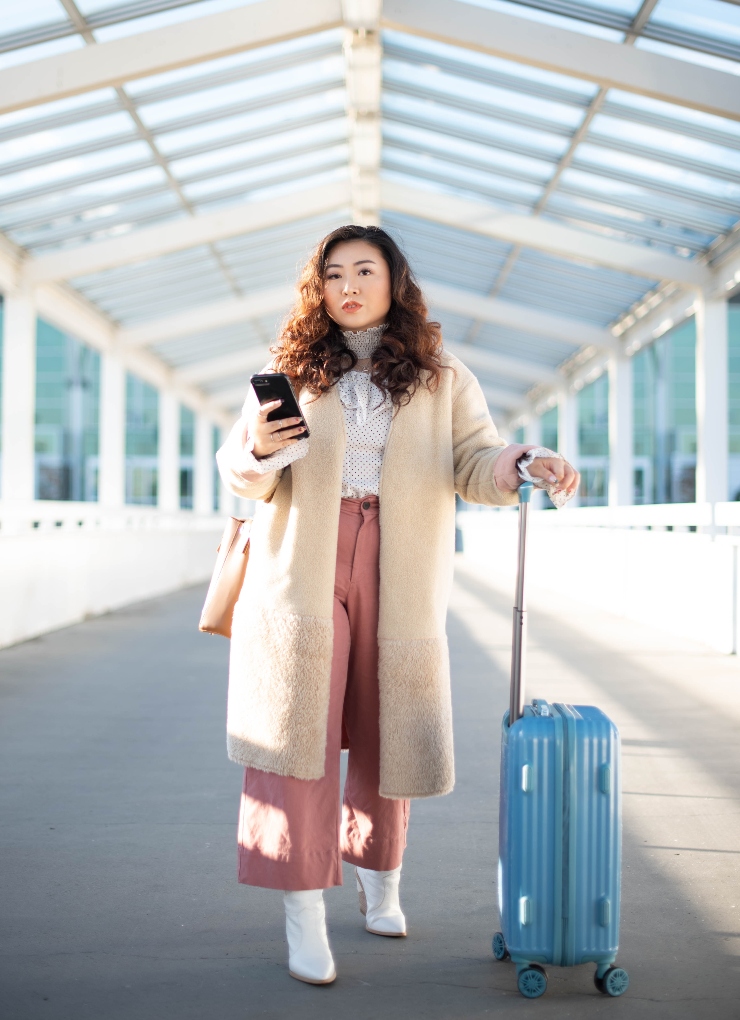
International Flyers:
The standard recommendation for international flyers is to arrive 3 hours before your flight.
11. Research How to Get To and From the Airports
If you aren’t familiar with where your airport is, research how long it will take you to get there and how you plan on getting there. If you need to park your car at the airport, you should know where to park it and how much it will cost.
Same thing on the arrival side, make sure you know how you will be getting from the airport to your accommodation at your destination.
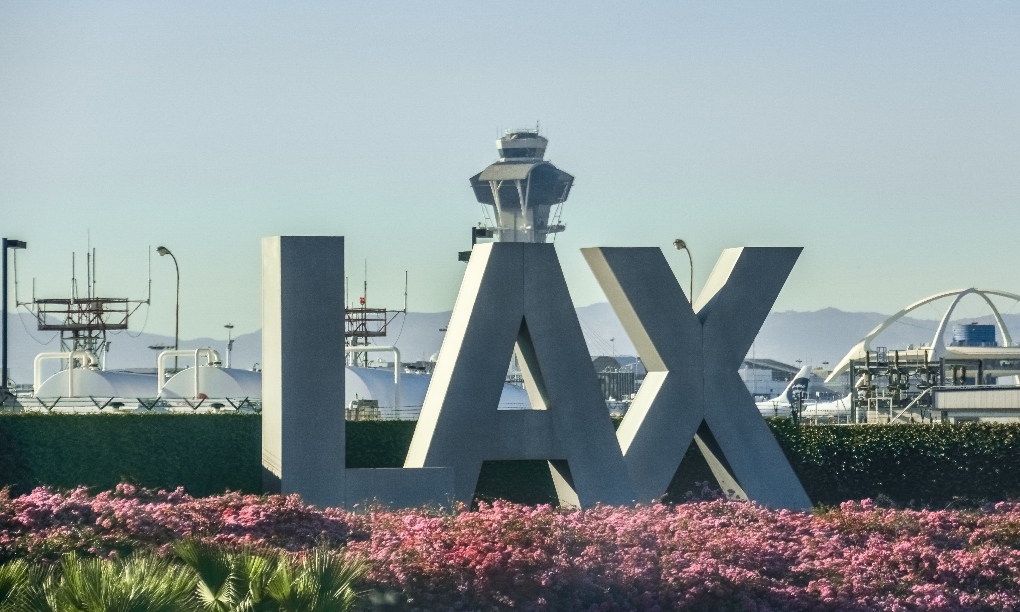
❗Do you need to rent a car for your first time flying? I recommend DiscoverCars for finding the best deals on rental cars during your trip.

12. How to Dress for Your Flight
People dress in a wide range for flights from comfortable to business-appropriate, so there is no right or wrong way to dress for your first time flight.
I recommend layering for your flight (or at least having a light sweater handy in case you get cold on the plane) and wearing clothes and shoes that are easy to remove for security.
Take into consideration the climate of where you land as well.
13. Prepare Your Entertainment
Some flights will have an entertainment system built into the seats. For shorter flights, your airline either won’t have in-flight entertainment or you might have to pay for it. For long flights (especially international ones) the airline might have free movies, TV shows, music, etc.
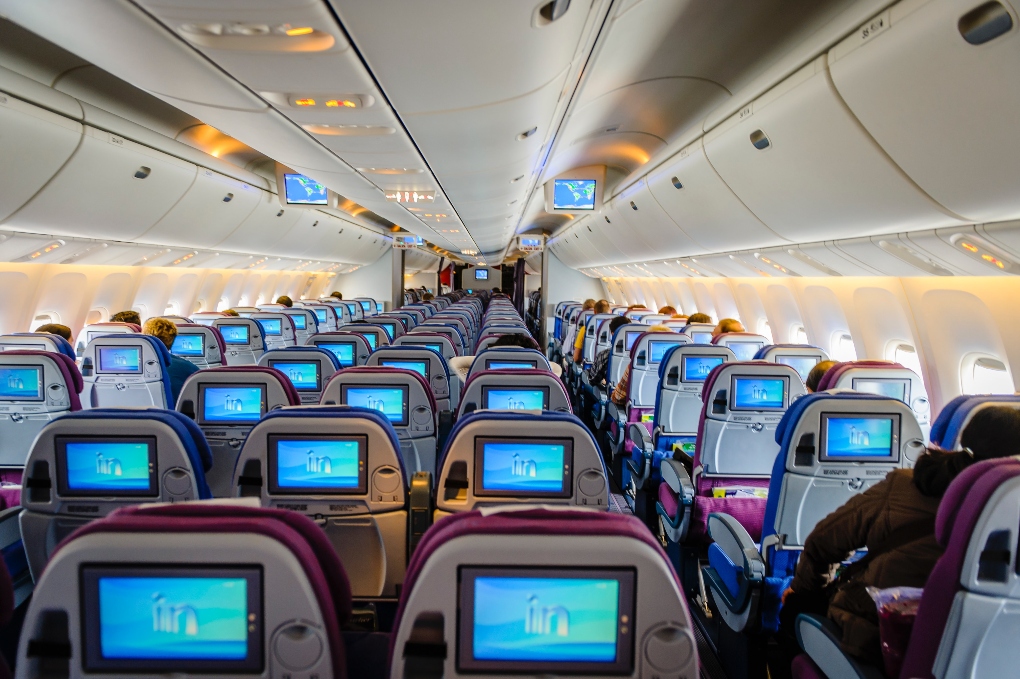
Beyond in-flight entertainment and bringing your own reading material (i.e. books, magazines), I recommend doing the following before your first time flying:
Download Apps:
If you want games (especially if you’re traveling with kids) or other apps that you can access without WiFi, make sure to download them ahead of time.
Download Books, Movies, Podcasts etc.:
I always make sure to download entertainment for myself onto my phone so I can use it in airplane mode. You can download shows on your Netflix app, or Podcasts and Books off of various apps.
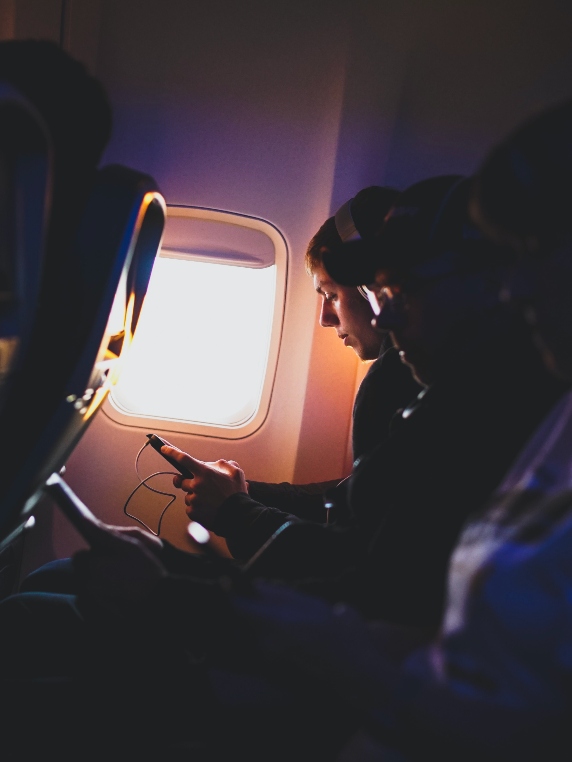
Airport WiFi:
Almost all airports should have free WiFi available. If you have a smartphone, I recommend downloading the app (where applicable) for your airline. Often you will be able to use the app to be alerted to any flight or gate changes.
14. Pack Snacks
If you want to save some money on airport food, pack snacks! Most food should be fine to go through security, they may just ask you to take it out.
15. Prepare Your Foreign Currency
If you are traveling internationally, you might want to exchange some money ahead of time. Your local bank should be able to exchange foreign currencies. There is no need to travel with too much cash as that can be risky and exchange fees likely won’t be in your favor.
Get enough ahead of time that you have money for transportation and maybe some food and ‘just in case’ cash. Using ATMs or money exchanges at the airport upon arrival can be overpriced.
⭐️ But PRO TIP, get the Charles Schwab debit card (it’s free to open a checking account) to receive unlimited ATM fee rebates for cash withdrawals worldwide. This card has saved me so much money while traveling!
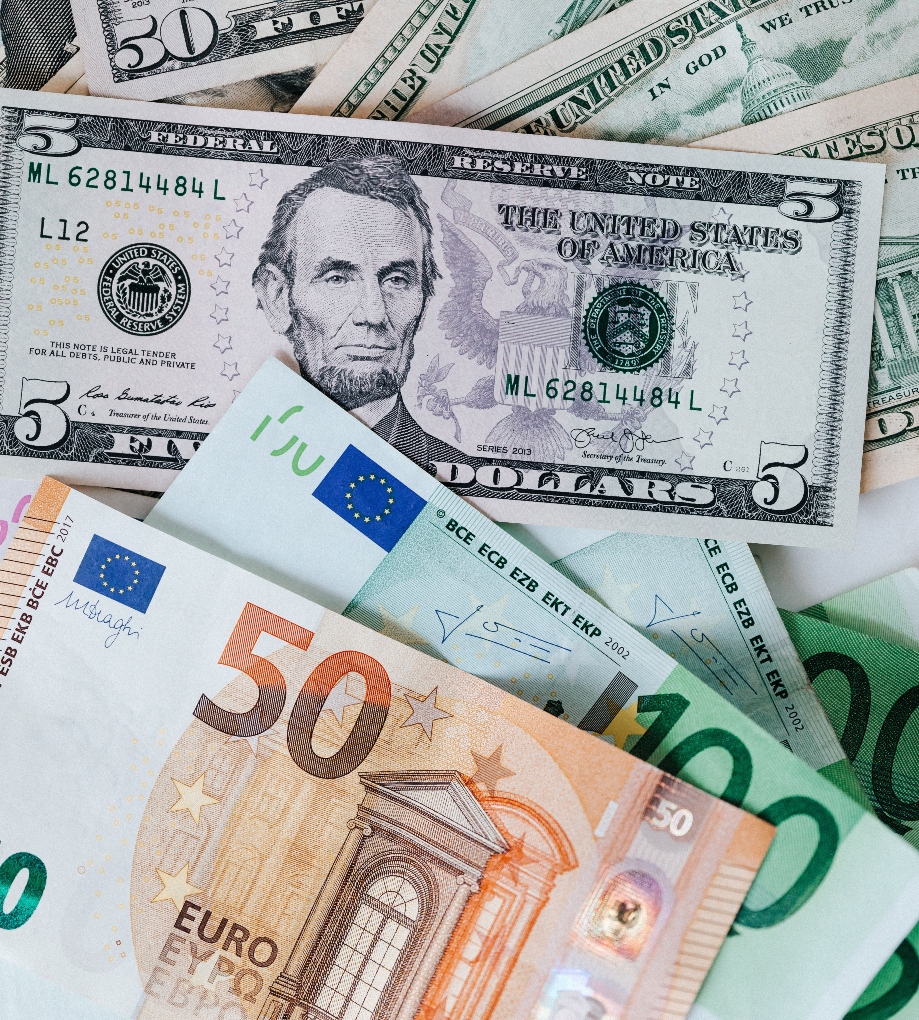
FIRST TIME FLYER’S GUIDE TO CHECKING IN FOR YOUR FLIGHT
16. Checking in Online
You can either check in ahead of time or do it in person when you arrive at the airport. Most airlines will send you a link to check in to your flight 24 hours in advance.
You can typically confirm your seating and verify flight details or any add-ons at this time. If you check in online or through the app, you will receive a mobile boarding pass. Simply show this pass on your phone at security and the gate or print it out in advance.
Personally, I always check in online ahead of time if I have the option. Not only does it save time and the hassle of waiting in more lines at the airport, but I also like knowing that I am set for my flight in advance.
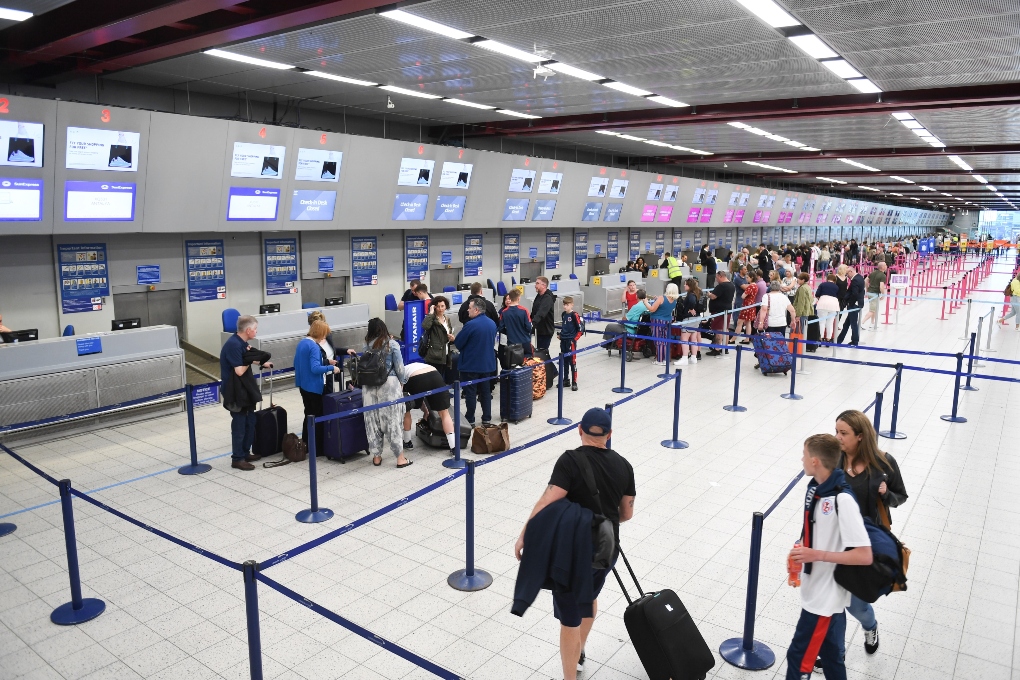
17. In-Person Flight Check-in
If you choose to check in when you arrive at the airport you will be looking for your airline’s check-in counter that lists your flight destination. You will be walked through the check-in process and able to check your bags at this point.
18. Checking a Bag vs. Only Carry-Ons
If you need to check a bag you will look for your airline’s bag drop-off or check-in counter. Most airlines have a designated bag drop area now for online check-ins. Though you still might have to wait in the check-in line, so give yourself plenty of time on arrival.
If you only have carry-ons and have already checked in online, you can continue straight past your airline’s counter and on to security.
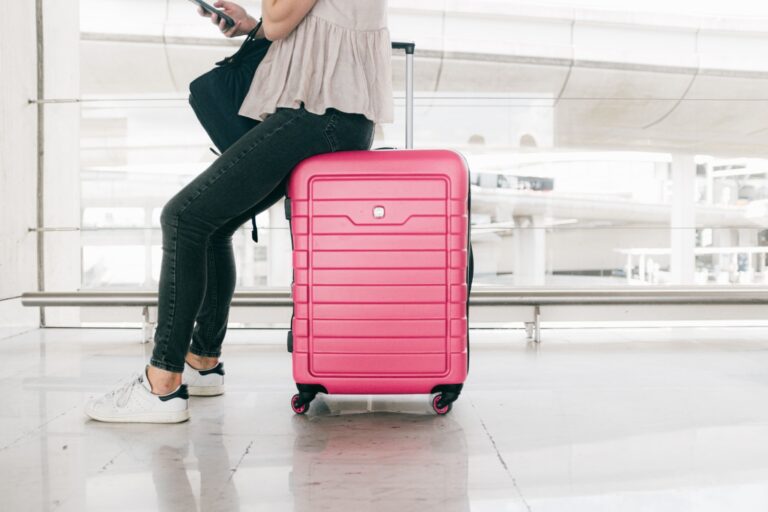
19. What to Do After Checking in
After you check-in, your next step is to head through security. Usually, at this point, you are just following the signs to get in the right line for security.
20. Asking for Guidance at the Airport
Don’t be afraid to ask for help at the airport! There are plenty of workers between those at the check-in counter, security, professionals with badges walking around the airport, etc. They know the airport very well and will gladly guide first-time flyers in the right direction if they get confused.
FIRST TIME FLYER’S GUIDE TO AIRPORT SECURITY
Airport security may seem like a daunting and complicated process, but you will get the hang of it quickly after the first time or two. Here is a first-time flyer’s guide to making airport security a breeze:
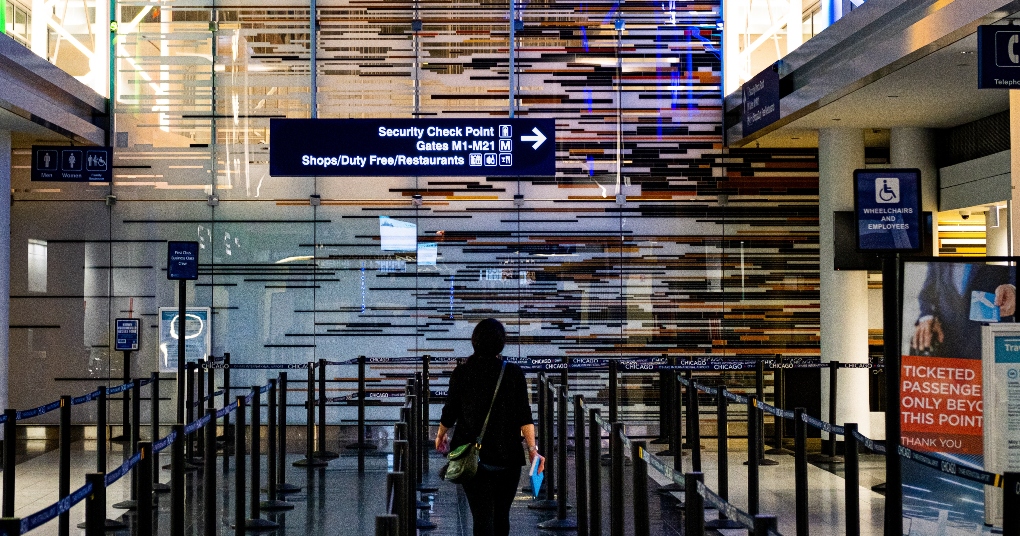
21. Make Sure All the Liquids in Your Carry-on Are Under 3.4 Ounces
You would be surprised how many liquids you might accidentally try to pack without thinking about it being a liquid. A few items to remember to watch the size on are: shampoo, conditioner, soap, sunscreen, any alcohol you are gifting or bringing with you, anything you are currently drinking, nail polish remover, vaseline/gel chapstick, some makeup, perfume, gel or spray deodorant, etc.
Some airports also require all of your liquids to fit in one quart-size clear bag which they may provide.
22. Don’t Pack Aerosol Cans (Bug Spray!)
Aerosol cans are not allowed through TSA. Though I have (accidentally) gotten away with it a few times, this includes even simple things like bug spray.
>>> TIP: use Picaridin lotion instead, or bug-repellant wipes.
23. Double Check the TSA’s List of Prohibited Items While Packing
Take a look at the TSA list of prohibited items while you are packing your carry-on. Familiarizing yourself with the list may save you some time and money from having to throw items away at security.
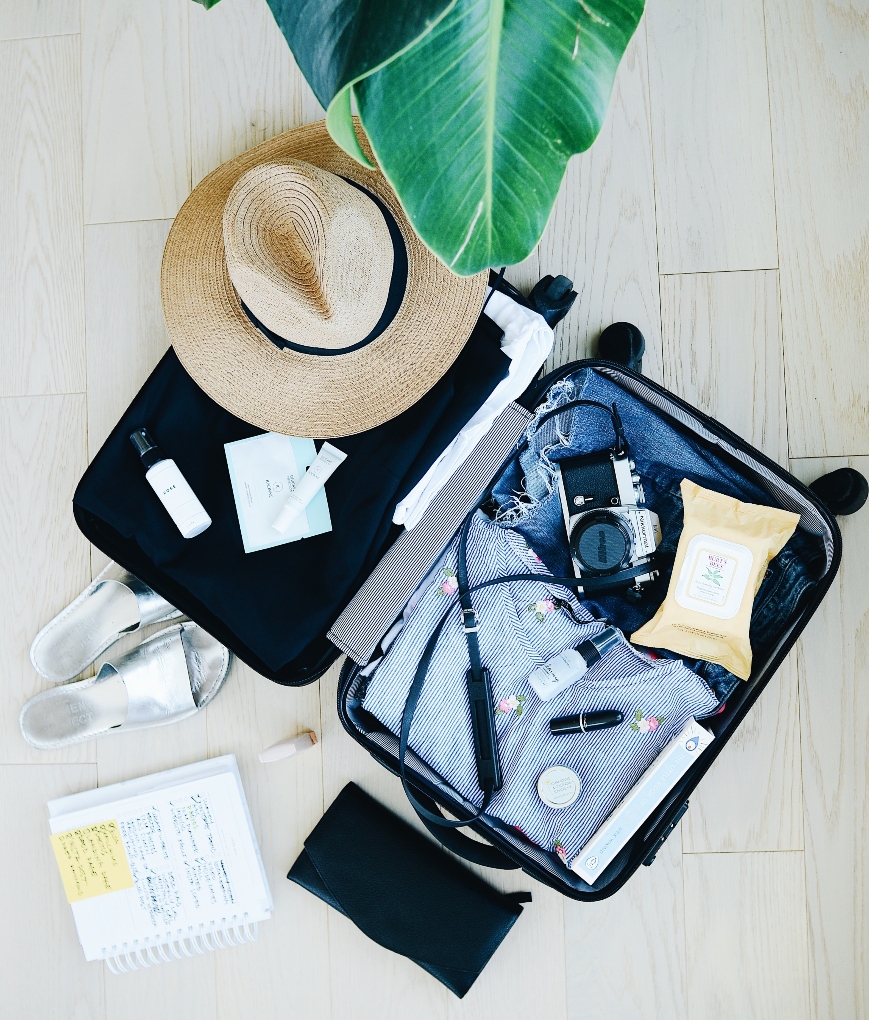
24. Have Your I.D. And Boarding Pass Out
You will have your I.D. and boarding pass checked before entering security. Have it out and ready to hand off as the line for security sometimes moves quickly.
25. Be Prepared to Take Your Shoes Off
In the U.S., most passengers need to remove their shoes for security. Those with TSA PreCheck, older than 75, or kids 12 and younger will not need to remove shoes.
26. Jewelry and Security
Small jewelry such as earrings, necklaces, and rings can stay on through the scanner, but remove anything big and metal that might set off the sensor.
27. Take Any Personal Electronics Out of Your Bag (i.e. Laptop, iPad)
Remove any electronics and place them in the bins. If you have your laptop in a computer bag or case it will need to be fully taken out.
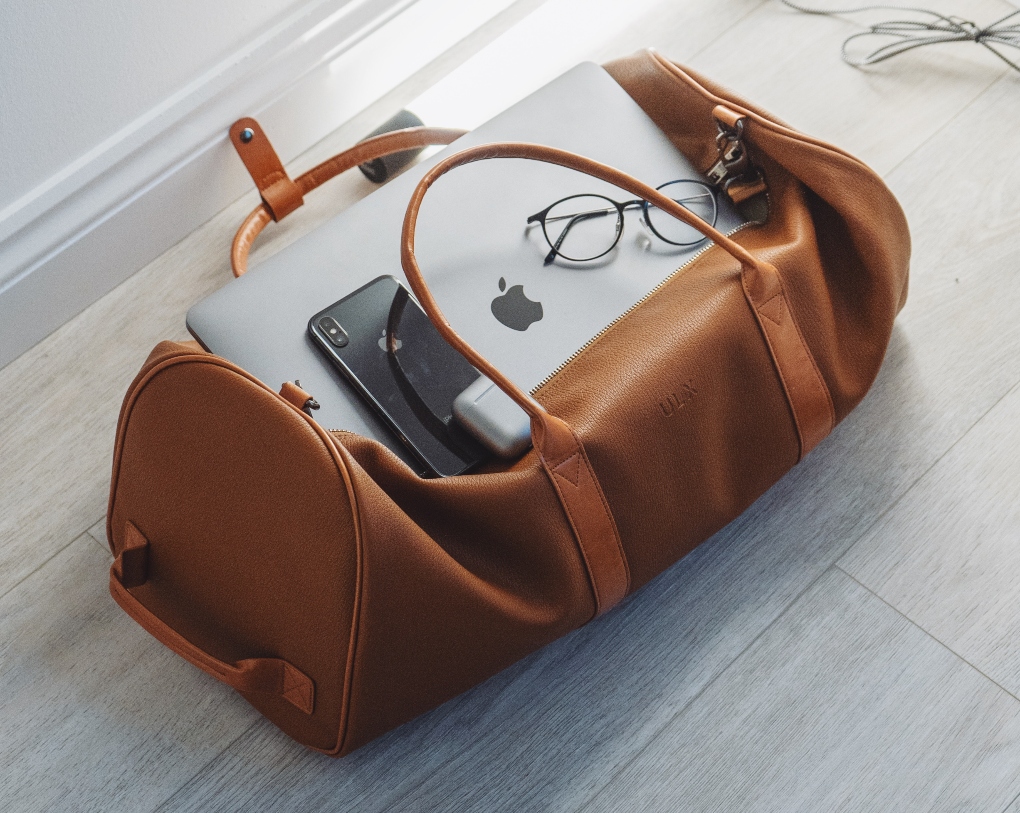
28. Take Off Your Belt
29. Take Off Your Jacket
30. Put Your Phone in the Bin
31. Double-Check Your Pockets
32. Make Sure to Drink or Dump the Water From Your Bottle
33. Listen to Security Personnel, They Will Help With What to Do
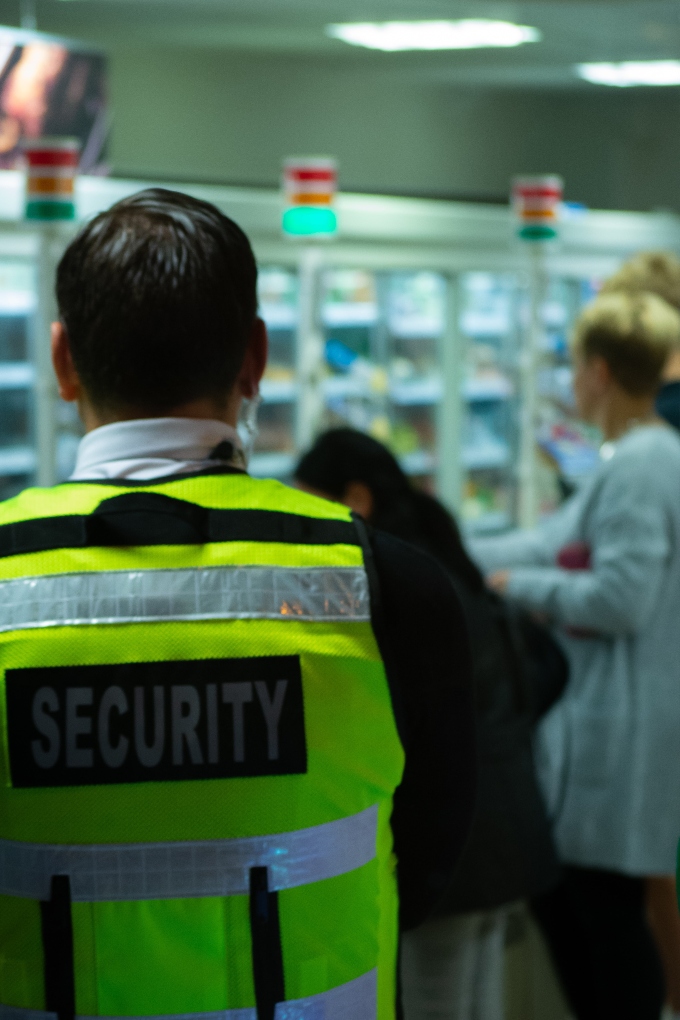
34. Moving Through the Scanner
Once all your belongings are moving through the security conveyor belt, you will be asked to step through a full-body scanner. Usually, you will spread your feet out and lift your hands above your head.
Next, you will be directed out of the scanner. Pause for a bit upon exiting until the security personnel clears you to pick up your belongings.
35. Pat Downs
On occasion, the scanner may pick something up, even if there is nothing there, or perhaps you forgot to remove something metal. The security personnel may use a handheld scanner or will lightly pat you down (following specific guidelines and boundaries to not be inappropriate).
It is a passenger’s right to refuse to be pat down, but you will not be allowed to fly if you don’t comply with TSA security checks.
36. What to Do if Your Bag Is Flagged
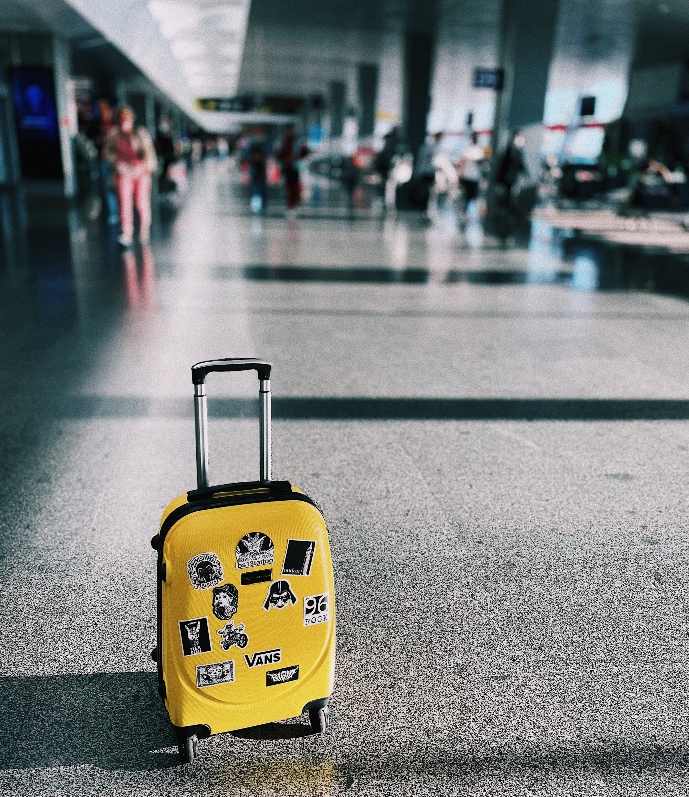
Having your bag flagged is not usually a big deal either. Little things might get picked up in the scanner that security wants to double-check, or perhaps you forgot a liquid that is too big.
Security personnel will ask you to step aside and ask to inspect your bag. You may have to pull some of your things out to let them search for what set off the alarms. Usually, this happens very quickly and you are on your way.
37. Duty-Free at the Airport
If you are questioning whether you can bring something on the plane or not, it is always a safer bet to just leave it at home and buy it at one of the many shops that are past security and what is known as “duty-free.” Duty-free refers to items that you do not have to pay import, sales, value-added, or other taxes on.
FIRST TIME FLYER’S GUIDE TO BOARDING AND THE FLIGHT
38. Reading Your Boarding Pass
Once you exit security, your next step will be to head to your gate. Your boarding pass (the printed version, not so much when it’s on your phone) usually lists your gate, the time that boarding starts, and your seat number.
39. Checking Airport Boards and Signs
There will be big electronic boards throughout the airport that list which flights are at which gate and if they are on time or delayed. I always cross-check my boarding pass with the electronic signs, because your gate might change.
Follow the signs around the airport that direct you to your gate. Again, when I arrive at the gate I check to see that my flight is indeed listed at the gate.
If you get there especially early, your gate might still be showing the flight before yours, in which case you will have to wait and keep an eye on the large boards to make sure nothing changes.
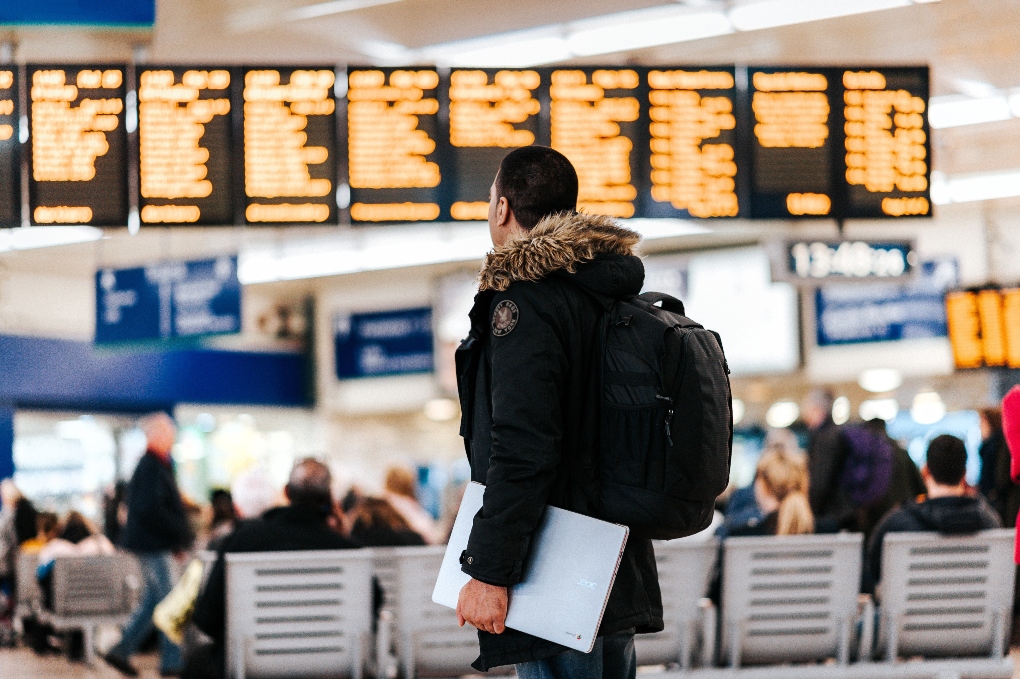
40. At Your Gate and Waiting
Once you reach your gate you are waiting until boarding starts. Find a seat and relax! Or, wander through the shops, find something to eat, or take a light walk to stretch your legs before your first flight.
41. Boarding Your Flight
Boarding Zones:
When your flight is ready to start boarding, the airport personnel will make announcements over the speaker or from the desk. Flights (especially larger ones) typically board by zone. Watch and listen for your zone to be called before getting in line to board. Your boarding pass will note what zone you are in.
Boarding Pass and I.D. Out:
Most flights at this point just check your boarding pass (since your I.D. was already checked at security), but I always keep my I.D. handy just in case.
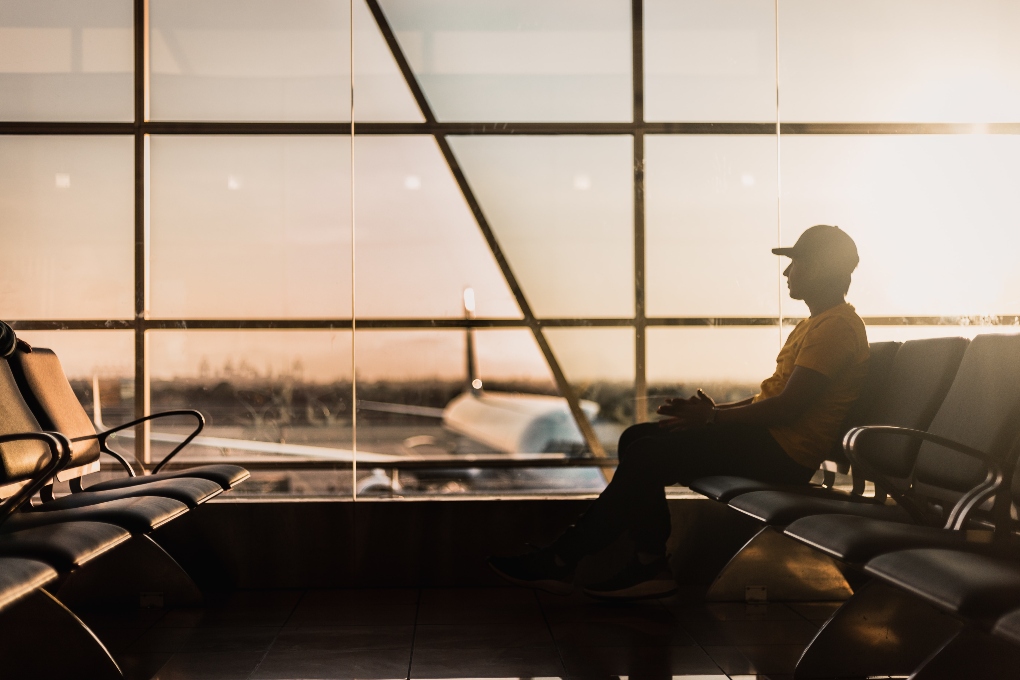
42. Checking Carry-on Bags
If the flight is full, your flight might ask for volunteers to check their carry-on bags or will require some people to check bags if they don’t get enough volunteers. If they ask you to check your carry-on they won’t charge you (unless it is oversized and won’t fit in the cabin) and it’s not a big deal.
You will simply pick up the bag upon arrival as if you checked it like normal. Just don’t forget to take anything out of the bag that you might need during the flight!
43. Getting on the Plane
When you get on the plane, there is usually a flight attendant at the front who will guide first-time flyers to their seat or answer any questions. Otherwise, just walk to your seat and make sure to check above the seat for the letter that corresponds to the window, middle, or aisle seat.
There is a figure of a person on the diagram to show you where the aisle is.

Storing Baggage:
If you have a carry-on, put it in the bin above your seat. Make sure that it is rotated the proper way so it fits and the door will close over it. Put your personal item under the seat in front of you.
44. Put Your Phone on Airplane Mode
All electronics should be put on airplane mode before take-off, this is to ensure there is no interference with the airplane’s signals. Unless told by your flight attendant, you don’t have to turn your electronics all the way off.
Airplane WiFi:
Airplanes nowadays typically have WiFi available for passengers to purchase. You can ask your flight attendant what options they have available.
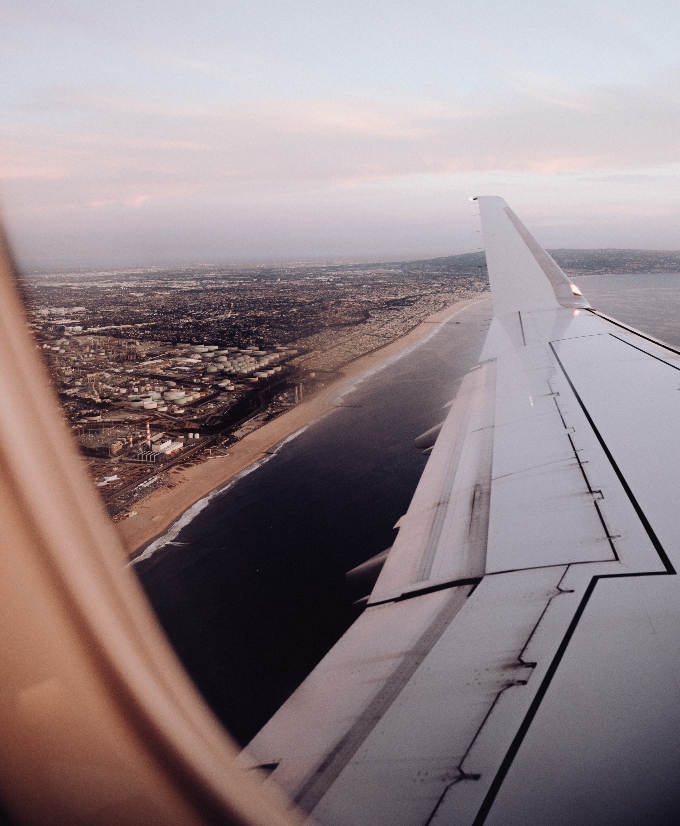
45. Listening to Airplane Emergency Measures
Flight attendants will either display or play a video about the emergency and safety measures of the aircraft. As a first-time flyer, you should pay attention to this guide in the very slim chance there is an emergency.
Don’t be alarmed by the message, they are required to go over safety but airplanes hardly ever encounter any issues.
46. In-Flight Service, Snacks, and Meals
Depending on your airline and the length of the flight, you might be served a snack and beverage or even a meal or two. All airlines have paid food options available that you can browse.
Budget airlines, especially on shorter flights, have started not giving anything out for free – this is why I recommend packing your own snacks! If you aren’t sure, ask your flight attendant what their options are.
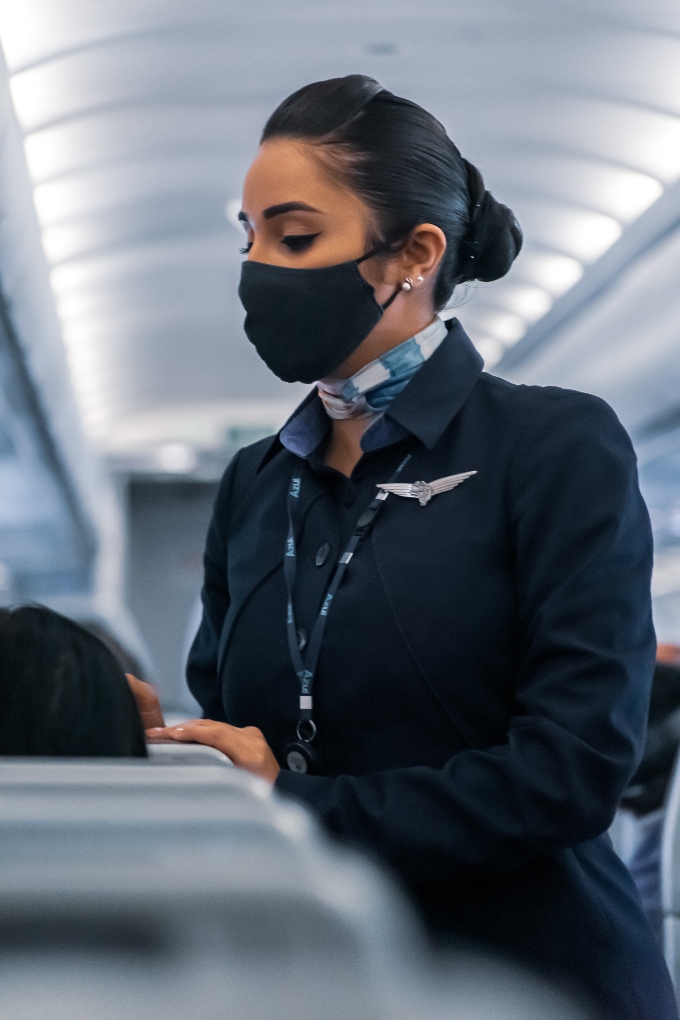
47. Stay Hydrated
Flying always dehydrates you, so make sure to drink plenty of water. Staying hydrated is one of the best ways to help prevent jet lag.
48. Relax and Enjoy!
LANDING AND WHAT TO DO AFTER YOUR FLIGHT
After landing, you may have to wait in your seat for a bit as the plane makes its way to the proper gate. The plane will deboard row by row from the front, just sit tight and wait your turn to exit.
49. Following Signs to Exit
When you exit the plane, you will want to follow the signs to the baggage claim and exit. If you didn’t check a bag, just head straight to the exit.
50. Understanding Baggage Claim
Once you reach baggage claim, there will be a few conveyor belts. Look for the one marked with your flight’s information, or look for an electronic board that has information. Depending on how fast you reach baggage claim, you may have to wait a bit.

51. Pick-up, Taxis, and Rideshares
Most airports now (especially bigger ones) have separate areas for passenger pick-up and Taxis and rideshares (Uber, Lyft, etc.). Follow the signs for what you need.
Some airports (such as Los Angeles) may even have you take a shuttle to get to the rideshares, in which case you shouldn’t call your ride until you make it to the designated area and know where to wait.
52. Layovers and Connecting Flights
If you have a layover or connecting flight, there will be separate signs pointing you in the right direction back towards the gates. Some airports will have you pass through security again, but many will not.
When you are checking your bag, make sure to ask if your bag will be checked through to your final destination. If you are on the same airline for both flights, this is pretty standard practice.
It can get a bit trickier when you switch airlines. If you need to pick up your bag, you will have to head to baggage claim and then back to the ticketing counter to check it for your next flight.
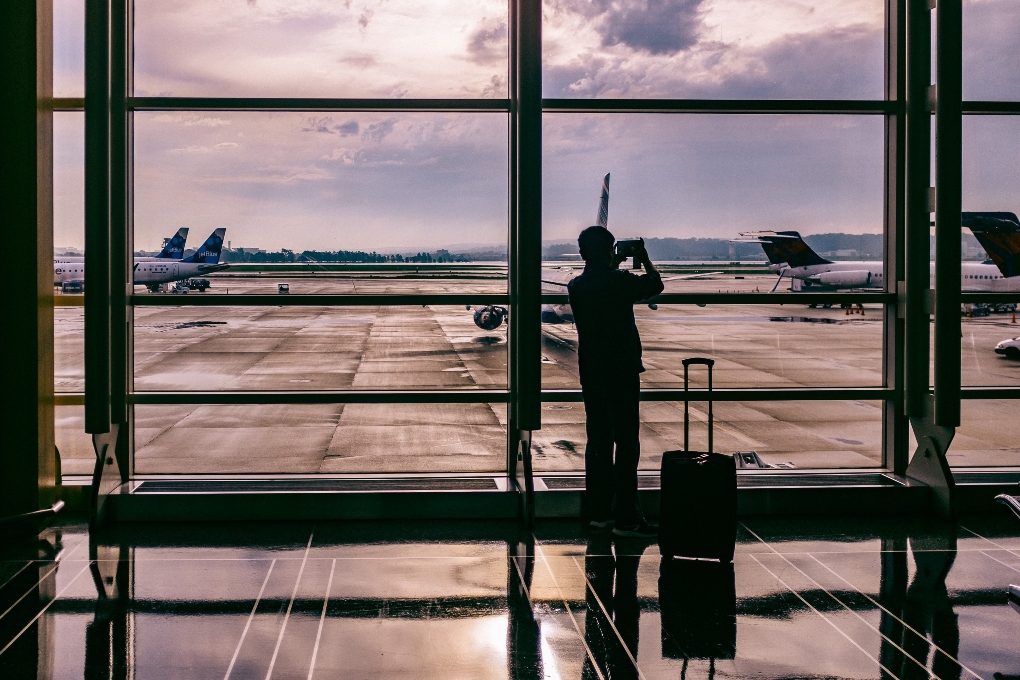
FIRST TIME FLYERS’ CHECKLIST
SUMMARY: Tips for Flying on a Plane for Your First Time
Preparing for your first time flying is extremely helpful, but no two flights are ever the same, so don’t stress the little details too much! Each airport has its quirks and layouts, so follow signs, ask for help if you need it, and reference this first-time flyers guide.
For travel junkies like me, airports are fun to find interesting restaurants, fun souvenirs, or to people-watch and dream about your next vacation. Plus, it opens up a world for you to explore if you can get comfortable flying (especially now that remote jobs are changing the way we travel). Enjoy your first flight!
Looking for resources to use for your next trip or move abroad?
CLICK HERE for my favorite travel and expat tools!
